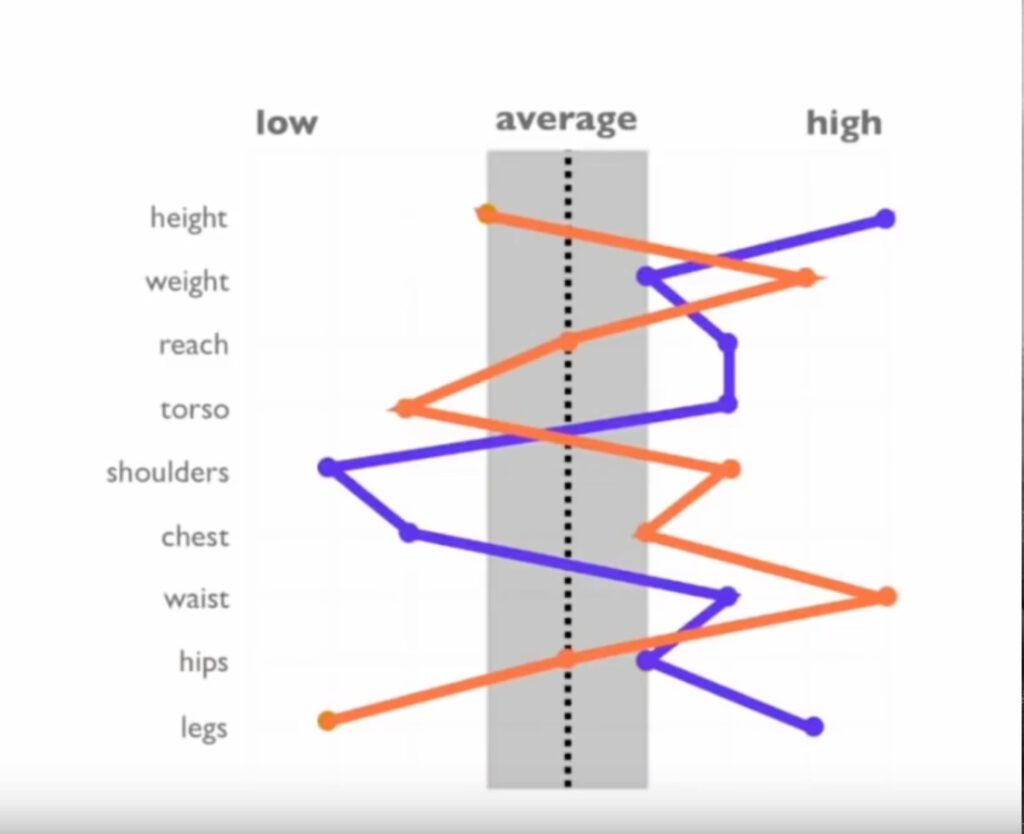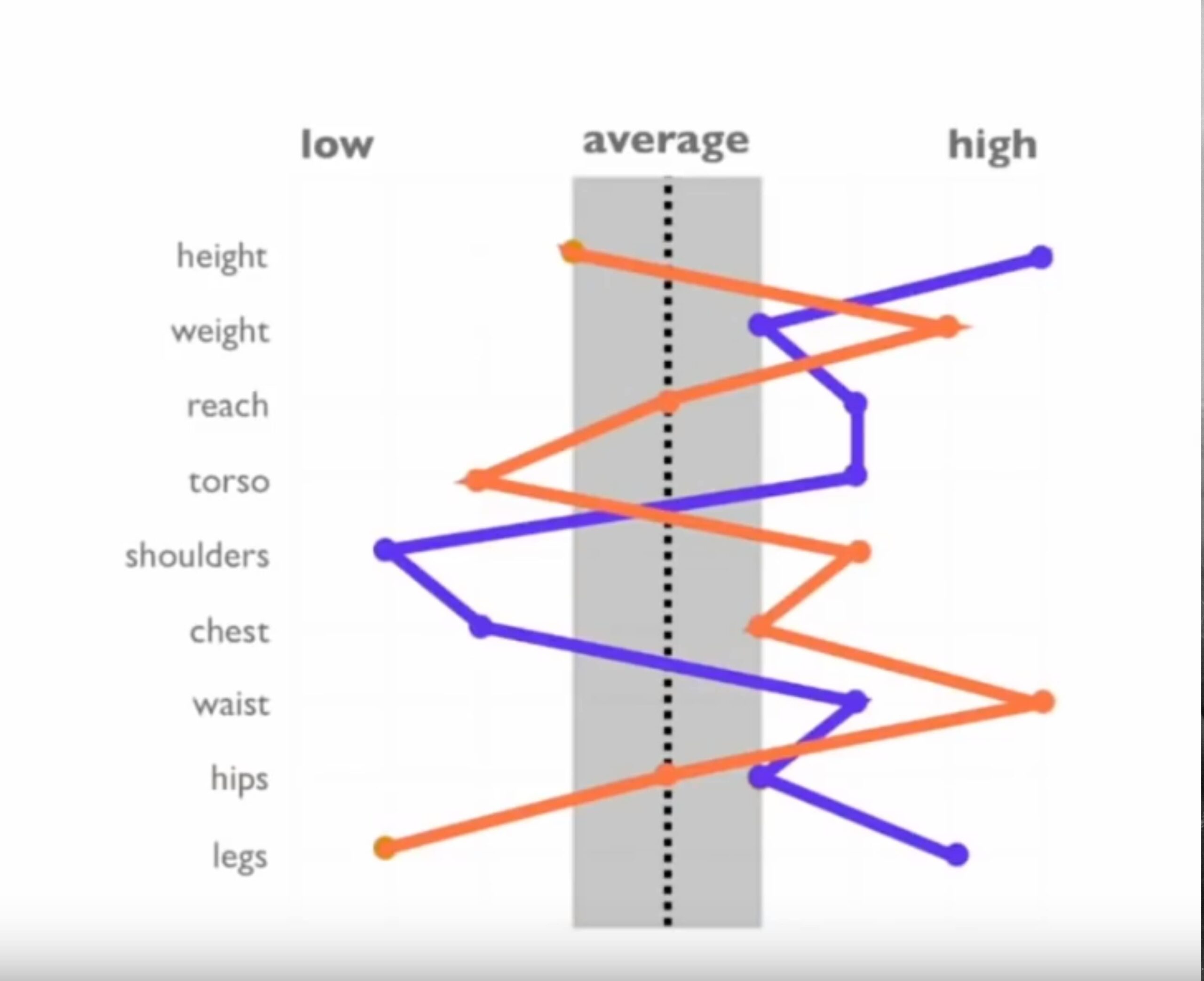It can be easy to try to design something to fit “the average person”. But do you want to? Or more importantly, is it even possible?
In many cases, an average may not exist. If you’re with a group of people where 50% are Christian and 50% are atheist, it’s not useful to say “the average person in this room sort of believes in God” — none of the people in the room fit that description.
The average pilot
Back in the 1950’s, the U.S. Air Force tried to design a cockpit to fit the average pilot’s body. After measuring 4,000 pilots, they discovered that none of them came close to having an “average” body.
This chart from World War Wings shows what I mean, with the “jagged size profile” of each pilot:

From the article:
But Lt. Gilbert S. Daniels had doubts. He chose to look at each of the 4,000 pilots’ measurements side by side with the average and found a revelation that was shocking for the times. Not a single pilot even came close the measurements of the average.
Averages can work
That’s not to say that all averages are bad. Facebook works to fit the average user, as does Windows, your laptop, the and latest book you read. Trying to completely customize everything would be incredibly inefficient.
Instead of dumping averages completely, working a set of options near the average can be great. You can customize Windows or Facebook to fit your needs, and that’s ultimately what the Air Force did with the introduction of adjustable seats:
While pilots still needed to be within a certain range of dimensions, these new adjustments revolutionized production. The solution was cheap, easy, and better yet, pilot performances soared.
For a bit more, check out this TED Talk that covered this very story:




